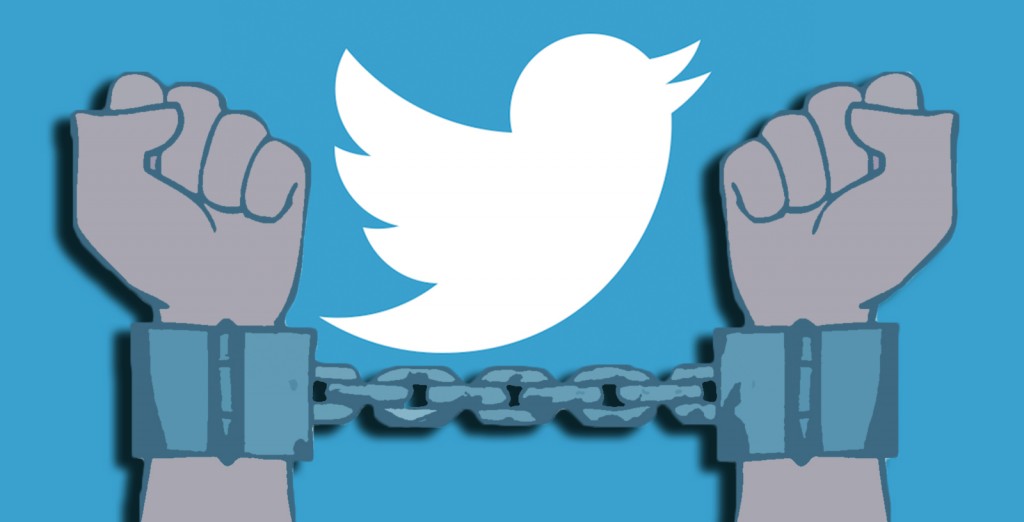[corner-ad id=1]
 By Joshua Krause
By Joshua Krause
When it comes to whatever social media platform we use on a regular basis, most of us take it for granted that these websites are spying on us in some capacity. Granted, many social media users don’t know or don’t care, but everyone else at least implicitly agrees that in exchange for using these website for free, their posts will be data mined for information that can be used to target them with ads.
However, the personal information and opinions that we put out on social media doesn’t just provide commercial opportunities for advertisers. It’s a veritable goldmine for governments as well. Everything that people used to keep to themselves in previous generations, is now willingly shouted into the Internet abyss for all to hear. Social media users often feel free to share their most controversial, subversive, and inflammatory thoughts on a platform that could reach millions of people. It’s kind of crazy when you think about it, but it’s the world we live in today.
Governments of course, love this. People say things on the Internet, that in years past would require a warrant to discover. Law enforcement would have to get permission from a judge to tap someone’s phone, or search their house for diaries and letters that would give them a damning insight into that person’s psychology and intentions. Now we just give it away for free.
Obviously, this makes it very easy for the government to identify individual threats. Somebody can talk about overthrowing the government on social media, and either they’ll be reported or some NSA algorithm will pick them up, and add their comments to a threat matrix. But social media has the potential to give the government so much more. It can also give them an insight into the collective desires of the masses.
A new study was recently conducted by Arizona State University, Texas A&M, and Yahoo, which discovered that with the right algorithm, you can predict with 70% accuracy, the probability that any given Twitter user is going post something that is part of a protest. They could use this information to predict a protest movement in the real world, as well as how big it will eventually become.
The researchers collected 2,686 posts related to the Nigerian general election that took place between February and April of last year, an election that was marred by political violence in the form of the Boko Haram insurgency and that was beset by accusations of voting irregularities. So what predicts when someone begins protesting on Twitter? It’s not your personal history so much as your Twitter history of interacting with people who are part of that movement.
“The interaction we study is how users mention each other,” researchers Suhas Ranganath and Fred Morstatter wrote to Defense One in an email. “In the model, the probability of the future post expressing protest increases if: 1) The post mentioning the user is related to the protest. 2) The author of the post mentioning the user is interested in the protest. We dynamically learn [or teach] the model by testing how each of the previous status messages of the given user are affected by the recent posts mentioning him. We then use the model to predict the likelihood of the user expressing protest in his next post.”
Their accuracy threshold of 70 percent is because what might seem completely unpredictable is in fact part of a pattern, albeit one that’s incredibly complex. The researchers employed Brownian motion theory to design the formula, a theory that usually is employed to track the movement of particles, as well as model stock market fluctuations and other highly complicated systems. “Brownian Motion for fluid particles models change in the direction of the particle movement on collision with other particles. We take each ‘particle’ as a social media user. We relate collision with other particles, other users mentioning him, and the change in direction to change of the user’s inclination to express protest in his next post. We then use the models of Brownian motion to relate the two quantities. We mainly employ this to model the dynamic change in user behavior resulting from interactions over time,” Suhas told Defense One.
I might add that it wasn’t just some university or a private company that decided to fund this study. The Office of Naval Research chipped in as well, so clearly the government is interested in this sort of thing.
For them, social media is a powerful tool. The deeply personal opinions that you might shout into the Internet, gives the government the power of prognostication. And as computer technology advances, they will be able to do better than 70%. They’ll be able to look at the information you post on social media, compare that to what everyone else is saying, and they’ll be able to predict wars, protests, and revolutions long before they occur. And that’s an incredibly dangerous power for any government to have.
Also Read:
Social Media Surveillance Expands as IBM Taps Twitter
Twitter Opens Entire Database to MIT – How Will It Be Used?
Joshua Krause is a reporter, writer and researcher at The Daily Sheeple. He was born and raised in the Bay Area and is a freelance writer and author. You can follow Joshua’s reports at Facebook or on his personal Twitter. Joshua’s website is Strange Danger .
Reflecting Beyond the Illusions by The Truth Tale - Now Live At The Following Locations
 |
 |
 |
 |
 |
 |
 |
 |
 |
 |